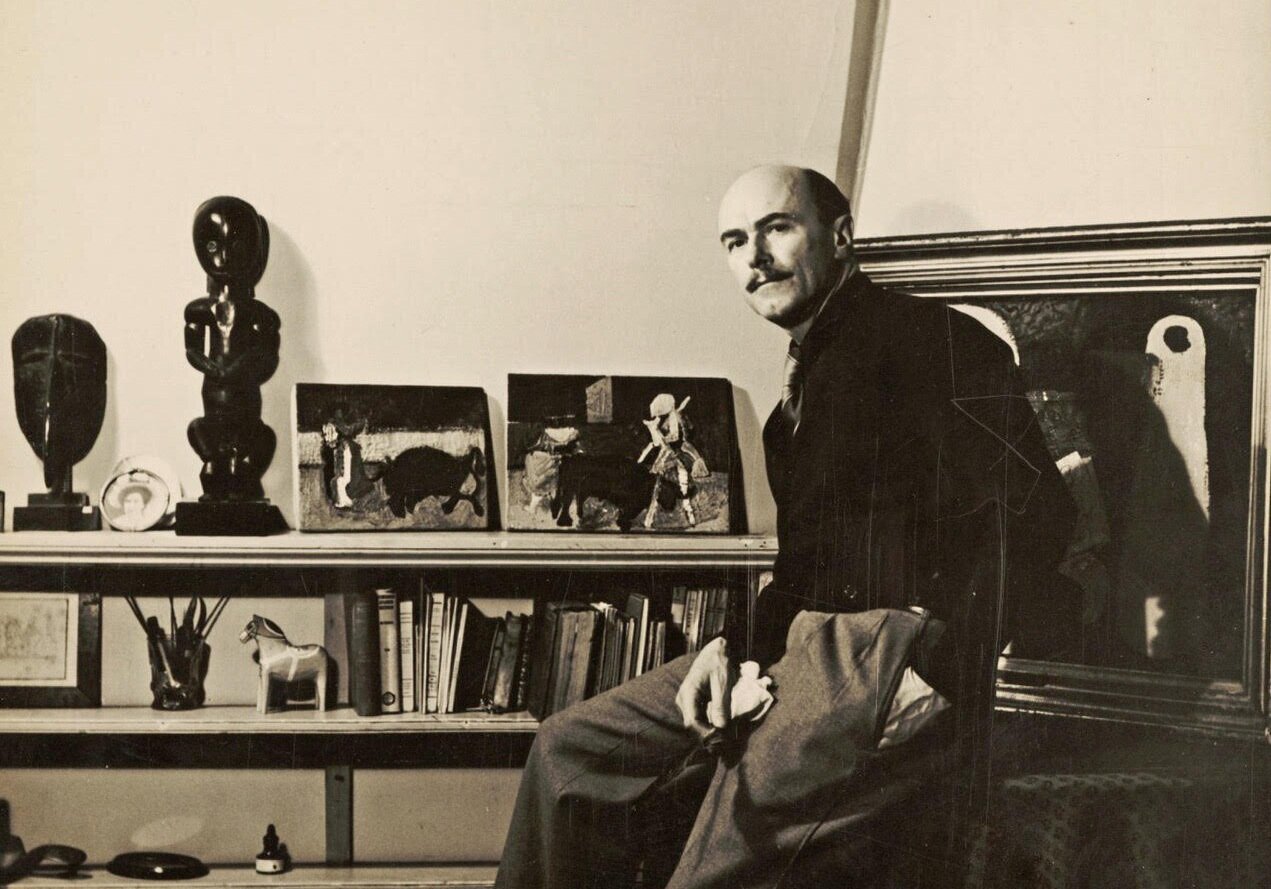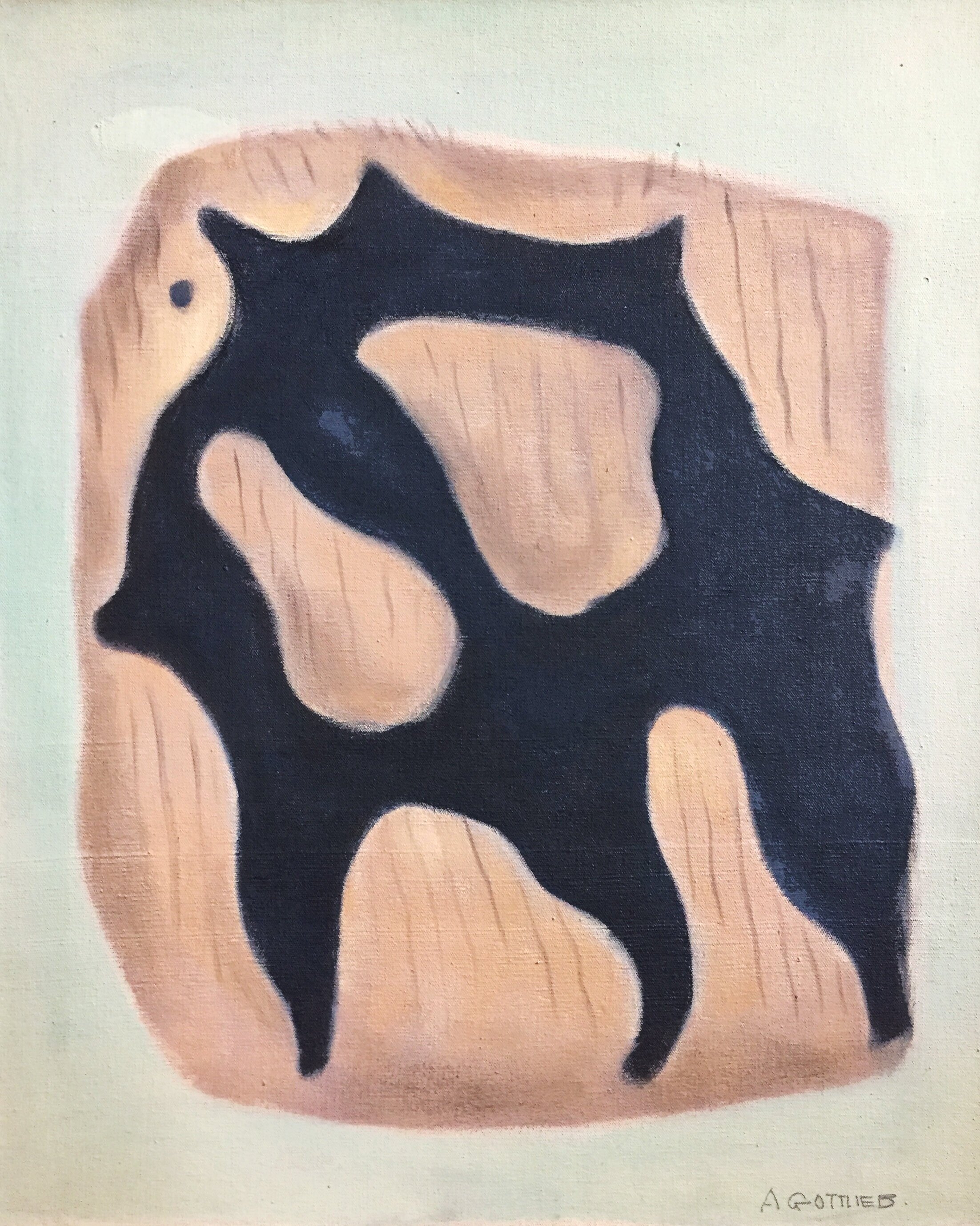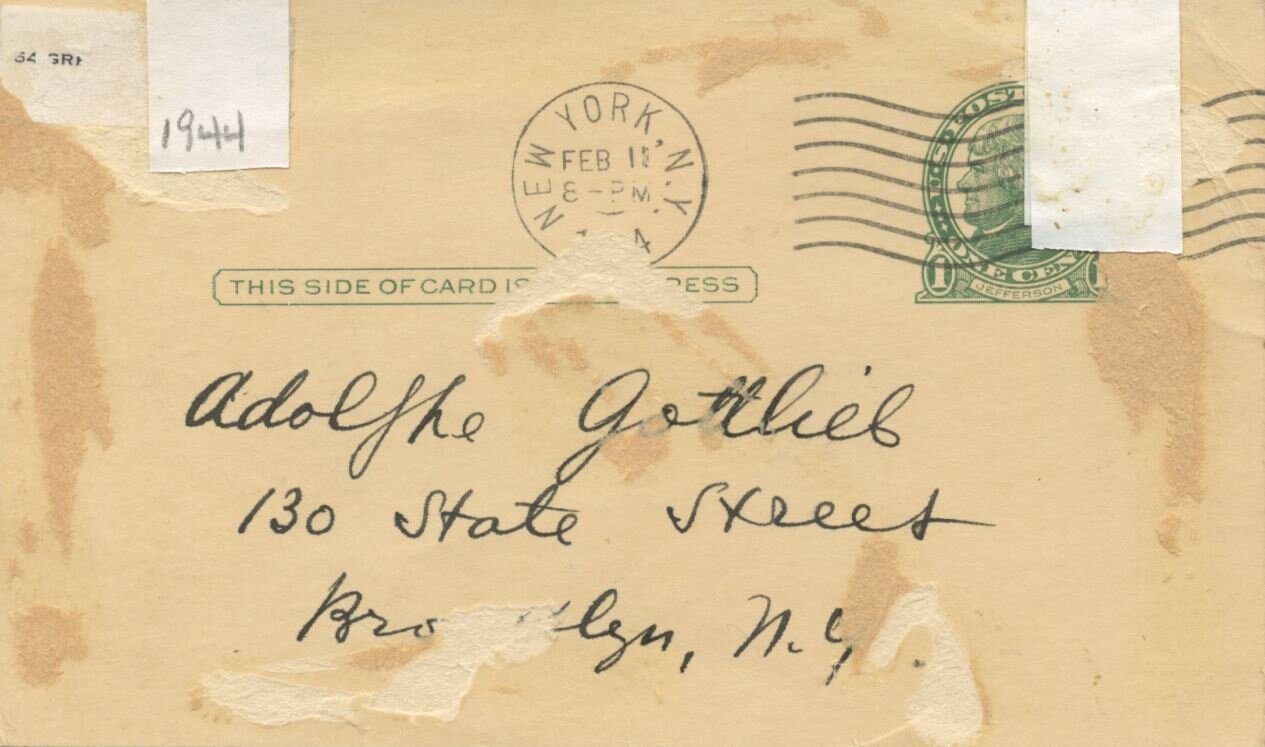Left: John D. Graham, 1939. John D. Graham papers, 1799-1988. Archives of American Art, Smithsonian Institution.
Right: Adolph Gottlieb in his home/studio in Brooklyn with pieces from his African art collection, 1942. Photographer: Aaron Siskind. © The Aaron Siskind Foundation.
John D Graham, born Ivan Dabrowski in Kiev in either 1881 or 1886, was a painter, theorist, and connoisseur who was an important influence on the Abstract Expressionist generation of American artists. Graham came to New York via Paris in the early 1920s, and enrolled in The Art Students League where he was the monitor for John Sloan’s class. He was active as a painter until his death in 1961, and he authored major articles on Picasso, Tribal Art, and abstraction that were widely read among young American artists in the 1930s. Slightly older than the Abstract Expressionists, Graham knew several European artists personally and was a vital link between many American artists and the ideas and theories of the School of Paris.
In a 1981 interview with Phyllis Tuchman, Esther Gottlieb recalled the story of how Adolph Gottlieb and John Graham met, saying, "In fact, Adolph knew John Graham when he first came to this country and he met him in [John] Sloan’s class. And he wanted to be an American citizen so Adolph went with him down to city hall to get his citizenship papers. And they were great friends. When we moved to Brooklyn Heights John used to come frequently to visit us and we introduced him to David [Smith] and all the people that we knew who were in the area who were artists. And then as time went on he just established himself and he was a great friend of Gorky’s and other people. But he was knowledgeable about primitive art, African art."
Left: John Graham, The White Pipe, 1930, oil on canvas mounted on board, 12 1/4 x 17”, Grey Art Gallery, New York University Art Collection. Gift of Dorothy Paris. 1961.56
Right: Adolph Gottlieb, Untitled (Still Life), 1941, oil on canvas, 25 13/16 x 34”
Left: John Graham, Mascara, 1950, oil on canvas, 24 x 19 1/2”, Collection: Addison Gallery of American Art, Phillips Academy, Andover, Massachusetts
Right: Adolph Gottlieb, Amoeba, 1944, oil on canvas, 24 x 20"
"Adolph liked John because he was a very erudite man and very sensitive about everything. He was interested in primitive sculpture before anyone else we knew. In fact, he was one of the few Americans who had any background or knowledge of it. He helped Frank Crowninshield make his collection, and later helped Helena Rubenstein. When we went to Europe in ’35, John gave us the names of a few dealers. I believe that their friendship grew because Adolph had been to Europe. It was a friendship that lasted over a long period of time."
– Esther Gottlieb Interview with Stephen Pearson, 1975
Above: Front cover and title page of Adolph Gottlieb's copy of HAVE IT, by John Graham.
Inscription by John Graham reads, "To Adolph Gottlieb JDG, Feb 20, 1925 NYC"
The friendship between Gottlieb and Graham grew through a commitment to progressive thought and a mutual appreciation of tribal art. Both artists were among a very small number of artists in New York in the early 1920s who had first-hand experience of European Modernism. They shared an interest in abstraction, although they ultimately defined those ideas differently; and each artist developed a unique understanding of the connections between the art of different societies and different eras. Some of the notions Graham presents in his 1937 book System and Dialectics of Art, and Graham’s adaptation of Carl Jung’s ideas about archetypes, appear to have influenced Gottlieb’s thinking as he developed his Pictographs in the 1940s.
Above: Adolph Gottlieb's copy of Graham's System and Dialectics of Art, including an inscription from the author.
"A friend of mine, John Graham, had a marvelous collection. He was collecting things for Frank Crowninshield. He helped assemble that collection and also did a lot of things I believe for Helena Rubenstein. So I was associated with people who had an intense interest in this matter and I had the opportunity to see very good pieces and I read whatever I could about it so that I became quite familiar with it."
– Adolph Gottlieb in an interview with Dorothy Seckler, 1967
Below: a 1944 postcard from John Graham commenting on Adolph Gottlieb's exhibition at the Wakefield Gallery
"Dear Adolph -- you are the one man in art in America who has been continously progressing -- your present show is the best you ever had, I was happy to see it and to feel enthusiastic about it. I would like Amoeba (1944) for myself. Much of everything to you, ever affectionately,
GRAHAM."
To see more from the archives of the Adolph and Esther Gottlieb Foundation,
click here.
©Adolph and Esther Gottlieb Foundation/Licensed by ARS, NY, NY⠀













